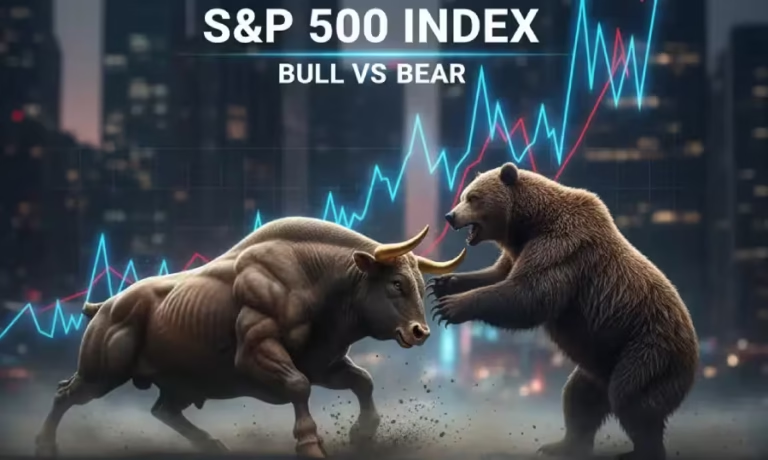
THE J.M.HURST CYCLES PRINCIPLES
Unveiling the J.M.Hurst cycle principles is the goal of this article, I will explain the J.M.Hurst principles in order to help traders to have a better understanding of how the HURST cycles principles works.
Among the various approaches to studying market cycles, the work of J.M. Hurst stands out as a pioneering and highly influential methodology.
Hurst was a brilliant 1970’s scientist who applied his research into the natural cycles found in physics, mathematics, and other disciplines to develop a unique form of cycle analysis for the financial markets.
Unveiling the J.M.Hurst cyclical patterns and forecasting models that aimed to predict the timing of market turns with incredible accuracy.
Hurst’s works focused on identifying and understanding the recurring patterns in financial markets, with the belief that these patterns could be used to forecast future market behavior.
The J.M. Hurst Cycles Principle is based on the idea that market movements are not random but rather follow predictable cycles of varying lengths.
Today, Hurst’s cycle principles are applied across all asset classes by hedge funds, institutional money managers, and individual traders alike.
Let’s investigate into the foundations of Hurst’s principles and cycle model.
Unveiling the ground of Cyclical Patterns
Hurst rejected the prevailing academic theories at the time that markets followed a random walk.
Instead, he hypothesized that the stock market and other traded markets traced out structured, patterned movements that were being governed by the intersection of the natural cycles found throughout life, nature, and the physical universe.
Drawing concepts from different fields as diverse as astronomy, geometry, and mechanics.
Hurst set out to find the underlying order and cycles embedded within the seemingly chaotic price fluctuations of market
Hurst theorized that the stock market doesn’t move in a random, but instead follows definitive cyclical patterns of expansion and contraction, similar to the regularity of the tides.
This cyclical pattern, when isolated, could be used to predict future price movements with a high degree of probability when applied with the right principles.
THE COMPONENTS OF HURT’S CYCLE MODEL
At the core of Hurst’s model are the permanent patterns of cyclical motion governed by specific geometric laws.
Hurst maintained that all forms of cyclical movement could be reduced down to a fundamental cycle with identifiable characteristics and consistent behavior.
This underlying cycle served as the building block for studying and projecting larger degrees of trend in the markets.
UnveilingThe key components that comprised Hurst’s cycles included:
Cycle Periods and Patterns.
Hurst found that all cycles had a principle period and traceable pattern that they adhered to and repeated over time.
Within each full cycle were series of simultaneous minor and major cycles at various degrees of trend.
Cycle Waves and Phases.
Each period or wavelength within the cycle was divided into two phases – a bull phase where the trend line rose at a consistent rate, and a bear phase where the trend decayed at a persistent rate.
Harmonics
Hurst believed natural harmonics and geometric angles were encoded into the cycles that pointed to potential turning points.
He used root calculation to identify these harmonic ratios within the cycles.
Cycle Definitions –
Cycles were defined by their origin and termination points, which Hurst gave specific geometric characteristics.
These definitions helped determine the overall amplitude and duration of each cycle.
By studying current price action in the context of the active cycles, their progress through the phases, geometric definitions, harmonic ratios, and overall cycle periods, Hurst theorized that a trader could anticipate when cycle reversals would occur and position themselves accordingly.
UNVEILING METHODS OF HURST CYCLE ANALYSIS.
To apply his cycle principles in practice, Hurst developed specific analytical methods and techniques.
These helped traders isolate cycles, identify their current phase, calculate potential cycle lengths, and estimate termination points for pending reversals.
Some of Hurst’s most well-known methods included:
Cycle Analysis via Descriptive Geometry
Using the geometric definitions of origin, midline and termination points, combined with arithmetic techniques, Hurst claimed cycles of any degree could be measured and forecasted.
This formed the basis of Hurst’s cycle analysis trading method.
Pattern Mapping and Sequencing.
By mapping the progression of cycles into identifiable patterns and sequences, Hurst aimed to spot cyclical footprints and translate historical analogs into future probabilities for price movements.
Harmonic Ratios.
Hurst’s intricate work with natural harmonic and geometric ratios, culminated identified cyclical turning points based on calculated numerical values like 0.618, 1.618, etc.
Nominal Model Filters.
Hurst developed proprietary techniques for filtering out the “noise” from market price data
in order to isolate the true cyclical trends and create nominal models for cycle projection.
From a practical trading standpoint, Hurst developed trading systems, rules and tools centered on these cyclical models.
They are used to set entries, stops, and profit targets based on anticipated cycle turning points, like the
Here few examples of some trading tools used to filter the noises.
The VTL, FLD’s, cyclic Nominal model, Hurst cycle bands.
Criticisms and Limitations of Hurst’s Work
While Hurst’s cycle research is very popular, it certainly faced its fair share of criticism and skepticism from academics and trading professionals.
Some of the main critiques included:
Geometric Complexity.
Detractors argued that Hurst’s models were overly complex, subjective, and lacked statistical rigor compared to more modern econometric models.
The calculations behind his geometric techniques were seen as esoteric.
Insufficient Back-Testing.
There were questions around whether his models had been rigorously back-tested across various market cycles and time frames to validate their true edge and consistency.
Lack of Peer Review.
As an independent researcher outside of the academic realm, Hurst’s principles were not peer-reviewed or held to the scrutiny of the scientific method.
This led to doubts around the empirical evidence behind his theories.
Impracticality.
With so much complexity involved in the cycle calculations, analysis, and trading methods, critics claimed Hurst’s approach was ultimately impractical for real-world trading by individuals.
Despite these criticisms, Hurst’s early insights into the cyclical nature of markets opened the door for further research and inspired generations of technical analysts.
For all above reasons, , in order to make easier for traders to have a better understanding of the powerful Hurst principles, I deeply dig into the Hurst cycle principles, and keep the most important components, ready to use them to become very successful traders.
See the trading tools menu.
THE LEGACY OF HURST CYCLICAL VISION
Hurst identified several key cycles, including:
The 18-Year Cycle:
This cycle is considered the primary or grand super cycle and is believed to influence long-term market trends and major economic events.
The 9-Year Cycle:
Also known as the commodity cycle, this cycle is thought to affect the prices of commodities and related sectors.
The 4-Year Cycle:
This cycle is often associated with presidential election cycles in the United States and their impact on the stock market.
The 40-Week and the 20 Week:
This shorter-term cycle is widely used by technical analysts to identify potential turning points in market trends.
The 80 days through the hourly cycles:
Those cycles are mostly use for daily or intraday trading.
HURST METHODOLOGY:
Hurst’s methodology involves analyzing historical market data and identifying recurring patterns using advanced mathematical techniques, such as cycle analysis and spectral analysis.
By identifying these cycles and their interrelationships, Hurst believed that investors could gain valuable insights into potential market turning points and make more informed investment decisions.
CONCLUSION:
Unveiling the stock market cycles is a crucial aspect of successful investing.
By recognizing the various cycles, their implications, investors can potentially enhance their risk management, timing, and overall investment performance.
However, it is essential to approach market cycles with caution, as they are inherently complex and influenced by numerous factors.
Combining cycle analysis with fundamental and technical analysis, along with a disciplined investment approach, can provide a more comprehensive and well-rounded strategy for navigating the ever-changing landscape of the stock market.









21 Responses